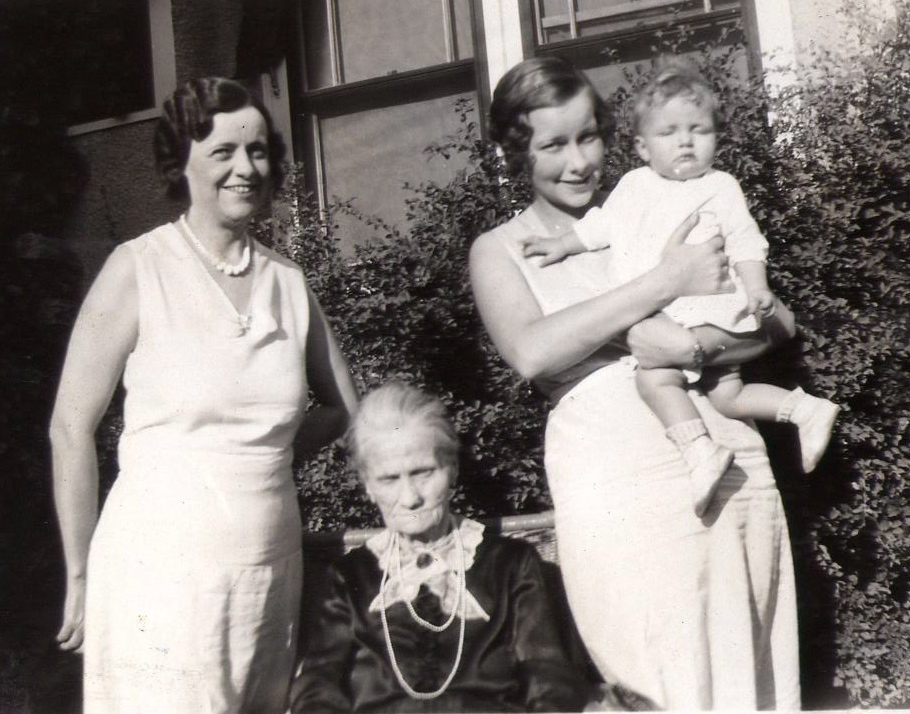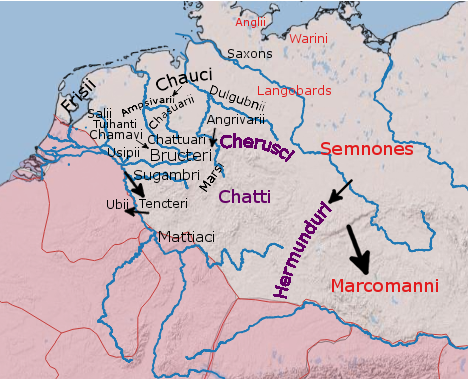|
Helgakviða Hundingsbana II
"Völsungakviða in forna" or "Helgakviða Hundingsbana II" ("The Second Lay of Helgi Hundingsbane") is an Old Norse poem found in the ''Poetic Edda''. It constitutes one of the Helgi lays together with '' Helgakviða Hundingsbana I'' and ''Helgakviða Hjörvarðssonar''. Henry Adams Bellows maintains in his commentaries that it is a patchwork of various poems that do not fit well together, but stanzas 28-37 and 39-50 are held to be among the finest in Old Norse poetry. The feud with Hunding and his sons The first section (containing stanzas 1 to 4) introduces Helgi as the son of Sigmund, of the Ylfing and the Völsung clan, and Borghild. They resided at Brálund and they named their son after Helgi Hjörvarðsson. Their clan was in a bloody feud with Hunding and his many sons. Helgi disguised himself and visited the home of Hunding's family where the only man present was Hunding's son Hæmingr (unknown in any other source). Hunding sent men to Helgi's foster-father Hagal to ... [...More Info...] [...Related Items...] OR: [Wikipedia] [Google] [Baidu] |
Valkyrie
In Norse mythology, a valkyrie ( or ; from ) is one of a host of female figures who guide souls of the dead to the god Odin's hall Valhalla. There, the deceased warriors become ('single fighters' or 'once fighters').Orchard (1997:36) and Lindow (2001:104). When the are not preparing for the cataclysmic events of Ragnarök, the valkyries bear them mead. Valkyries also appear as lovers of heroes and other mortals, where they are sometimes described as the daughters of royalty, sometimes accompanied by ravens and sometimes connected to swans or horses. Valkyries are attested in the ''Poetic Edda'' (a book of poems compiled in the 13th century from earlier traditional sources), the ''Prose Edda'', the (both by Snorri Sturluson) and the (one of the Sagas of Icelanders), all written—or compiled—in the 13th century. They appear throughout the poetry of skalds, in a 14th-century magical formula, charm, and in various runic inscriptions. The Old English cognate term appears ... [...More Info...] [...Related Items...] OR: [Wikipedia] [Google] [Baidu] |
Sophus Bugge
Elseus Sophus Bugge (5 January 1833 – 8 July 1907) was a Norwegian philologist and linguist. His scholarly work was directed to the study of runic inscriptions and Norse philology. Bugge is best known for his theories and his work on the runic alphabet and the ''Poetic Edda'' and ''Prose Edda''. Background Bugge was born in Larvik, in Vestfold county, Norway. His ancestors had been merchants, ship owners and captains of the Larvik for several generations. Bugge was a Candidatus magisterii (1857) and research fellow in comparative linguistics and Sanskrit (1860). He was educated in Christiania, Copenhagen and Berlin. Career In 1866, he became professor of comparative philology, comparative Indo-European linguistics and Old Norse at Christiania University now the University of Oslo. In addition to collecting Norwegian folksongs and traditions and writing on Runic inscriptions, he made considerable contributions to the study of the Celtic, Romance, Oscan, Umbrian and Etrus ... [...More Info...] [...Related Items...] OR: [Wikipedia] [Google] [Baidu] |
Lee M
Lee Mulhern (born 12 June 1988), now known as Lee Matthews, is a singer-songwriter from Northern Ireland. Starting age 8, Lee Mulhern (his birth name) had performed as a child star prodigy covering pop and country songs on many Irish and UK radio and television shows. At age 17, he embarked on a series of music projects like Streetwize, Streetside and Access All Areas, in a bid to be launched as an "international boy band" made up of singers from various nationalities. After the boy band projects fell through, he relaunched a solo music career adopting the name Lee.M, and for a short time formed NXT-GEN, an electropop duo collaboration with Pete Doherty. In 2013, as Lee Matthews, he became part of the country music scene in Ireland in the Country and Irish genre releasing two albums, ''A Little Bitty Country'' in 2014 and ''It's a Great Day to Be Alive'' in 2015 and a string of singles releases. Beginnings as a child star Lee Mulhern was born in Omagh, Northern Ireland. He no ... [...More Info...] [...Related Items...] OR: [Wikipedia] [Google] [Baidu] |
Benjamin Thorpe
Benjamin Thorpe (1782 – 19 July 1870) was an English scholar of Old English language, Anglo-Saxon literature. Biography In the early 1820s he worked as a banker in the House of Rothschild, in Paris. There he met Thomas Hodgkin, who treated him for tuberculosis. After studying for four years at Copenhagen University, under the Danish philologist Rasmus Christian Rask, Thorpe returned to England in 1830. In a few years he established a reputation as an Anglo-Saxon scholar. In recognition of unremunerative work, Thorpe was granted a civil list pension of £160 in 1835, and on 17 June 1841 this was increased to £200 per annum. He was a Fellow of the Society of Antiquaries of London, a member of the Royal Academy of Sciences at Munich, and of the Society of Netherlandish Literature at Leyden He died at Chiswick in July 1870. Bibliography In 1830 Thorpe brought out at Copenhagen an English version of Rask's ''Anglo-Saxon Grammar'' (a second edition of this appeared at London). ... [...More Info...] [...Related Items...] OR: [Wikipedia] [Google] [Baidu] |
Helgi Haddingjaskati
Helgi Haddingjaskati (Old Norse: , meaning "Helgi the lord of the Haddingjar") was a legendary Norse hero of whom only fragmentary accounts survive. It is said in the end section of ''Helgakviða Hundingsbana II'', a poem of the ''Poetic Edda'', that the hero Helgi Hundingsbane and his lover Sigrún were reincarnated as Helgi Haddingjaskati and the valkyrie Kára, Halfdan's daughter, who were the protagonists of the '' Káruljóð''. ''Káruljóð'' is lost, but a part of the adventures of Helgi and Kára are held to survive in the legendary saga '' Hrómundar saga Gripssonar''. Henry Adams Bellows' commentary in his translation of ''Helgakviða Hundingsbana II'' (1936)at Sacred Texts In this legend, Helgi Haddingjaskati is the champion of two Swedish kings named Haldingr. Helgi fights against the protagonist of the saga, who is named Hrómundr, but Helgi is aided in the battle by his lover Kára's magic. During the battle, she is in the shape of a swan, but by mistake Helgi hurt ... [...More Info...] [...Related Items...] OR: [Wikipedia] [Google] [Baidu] |
Valhalla
In Norse mythology, Valhalla ( , ; , )Orchard (1997:171–172) is described as a majestic hall located in Asgard and presided over by the god Odin. There were five possible realms the soul could travel to after death. The first was Fólkvangr, ruled by the goddess Freyja. The second was Hel, ruled by Hel, Loki's daughter. The third was that of the goddess Rán. The fourth was the Burial Mound where the dead could live. The fifth and last realm was Valhalla, ruled by Odin and was called the Hall of Heroes. The masses of those killed in combat (known as the einherjar), along with various legendary Germanic heroes and kings, live in Valhalla until Ragnarök, when they will march out of its many doors to fight in aid of Odin against the jötnar. Valhalla was idealized in Viking culture and gave the Scandinavians a widespread cultural belief that there is nothing more glorious than death in battle. The belief in a Viking paradise and eternal life in Valhalla with Odin may hav ... [...More Info...] [...Related Items...] OR: [Wikipedia] [Google] [Baidu] |
Einherjar
In Norse mythology, the einherjar (singular einheri; literally "army of one", "those who fight alone")Simek, Rudolf (1993). ''Dictionary of Northern Mythology''. Translated by Angela Hall. p. 71.Orchard (1997:36) and Lindow (2001:104). are those who have died in battle and are brought to Valhalla by valkyries. In Valhalla, the einherjar eat their fill of the nightly resurrecting beast Sæhrímnir, and valkyries bring them mead from the udder of the goat Heiðrún. The einherjar prepare daily for the events of Ragnarök, when they will advance for an immense battle at the field of Vígríðr. The einherjar are attested in the ''Poetic Edda'', compiled in the 13th century from earlier traditional sources, the ''Prose Edda'', written in the 13th century by Snorri Sturluson, the poem '' Hákonarmál'' (by the 10th century skald Eyvindr skáldaspillir) as collected in '' Heimskringla'', and a stanza of an anonymous 10th century poem commemorating the death of Eric Bloodaxe known as ... [...More Info...] [...Related Items...] OR: [Wikipedia] [Google] [Baidu] |
Daughters Of Ægir
A daughter is a female offspring; a girl or a woman in relation to her parents. Daughterhood is the state, condition or quality of being someone's daughter. The male counterpart is a son. Analogously the name is used in several areas to show relations between groups or elements. From biological perspective, a daughter is a first degree relative. The word daughter also has several other connotations attached to it, one of these being used in reference to a female descendant or consanguinity. It can also be used as a term of endearment coming from an elder. In patriarchal societies, daughters often have different or lesser familial rights than sons. A family may prefer to have sons rather than daughters and subject daughters to female infanticide. In some societies, it is the custom for a daughter to be 'sold' to her husband, who must pay a bride price. The reverse of this custom, where the parents pay the husband a sum of money to compensate for the financial burden of the woman ... [...More Info...] [...Related Items...] OR: [Wikipedia] [Google] [Baidu] |
Semnones
The Semnones were a Germanic and specifically a Suebi people, located between the Elbe and the Oder in the 1st and 2nd centuries AD. They were described in the late 1st century by Tacitus in his ''Germania'': "The Semnones give themselves out to be the most ancient and renowned branch of the Suebi. Their antiquity is strongly attested by their religion. At a stated period, all the tribes of the same group assemble by their representatives in a grove consecrated by the auguries of their forefathers, and by immemorial associations of terror. Here, having publicly slaughtered a human victim, they celebrate the horrible beginning of their barbarous rite. Reverence also in other ways is paid to the grove. No one enters it except bound with a chain, as an inferior acknowledging the might of the local divinity. If he chance to fall, it is not lawful for him to be lifted up, or to rise to his feet; he must crawl out along the ground. All this superstition implies the belief that from thi ... [...More Info...] [...Related Items...] OR: [Wikipedia] [Google] [Baidu] |


